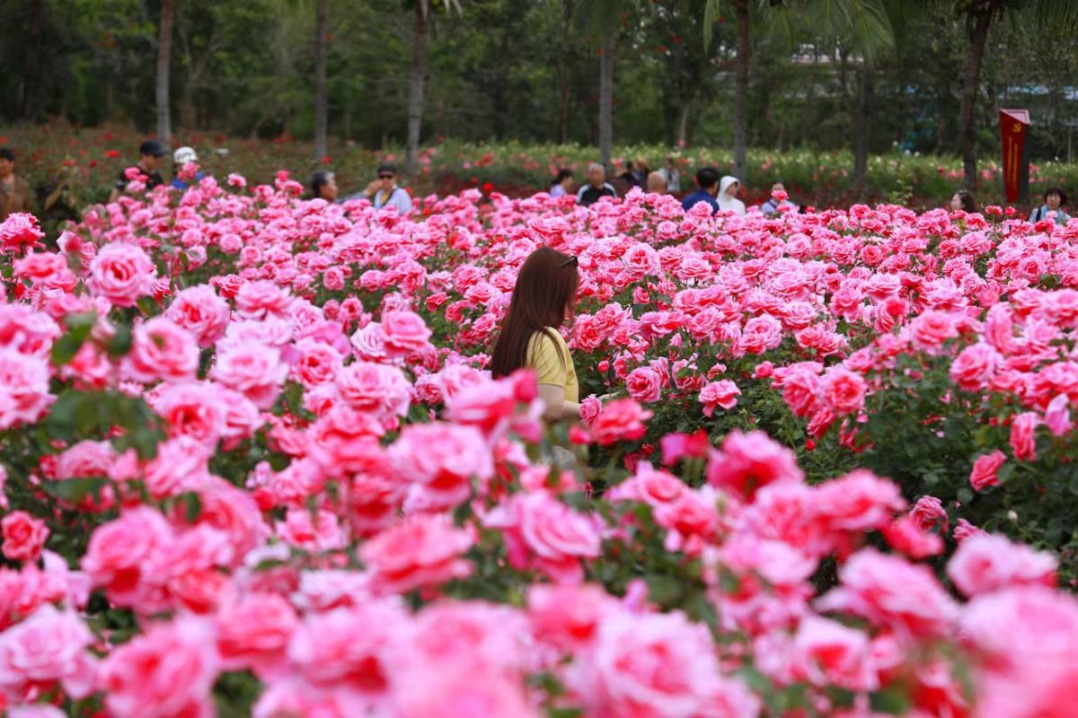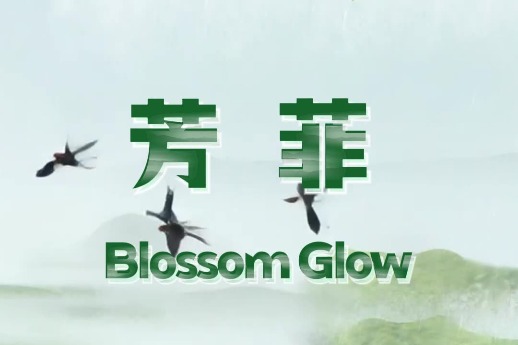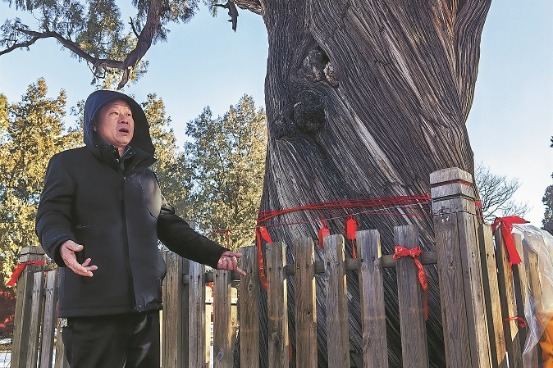Youth demystify fine wine investment


Hong Kong's elimination of taxes and licenses on the import and export of wine in 2008 was pivotal in its market leadership. The combined youth affluence of the city and the Chinese mainland drives wine as an investment asset and lifestyle choice. Wang Yuke reports from Hong Kong.
Wine collection and investment used to be the preserve of the rich upper-class traditionally associated with hedonistic lifestyles. That has changed in recent years with the influx of younger investors who have broadened the wine sector.
Paul Wong, head of Sotheby's Department of Wine and Spirits Auction in Asia, refers to its three-day wine sales in Hong Kong featuring five auctions from Oct 7-9, 2021 which yielded HK$196 million ($25 million) in sales, logging the third-highest total for Sotheby's Wine & Spirits Sales Series in Asia.
Wine online
Wong sees that as a consequence of auction houses being forced by the COVID-19 pandemic to go online with sales promotions. The affluent youth are very comfortable with online purchases and are willing to explore. "In 2021, 37 percent of our new buyers were under the age of 40. Increased activity from new buyers at auction accounted for 40 percent of total sales," Wong says.
However, Wong does not see that as a move to invest primarily for long term monetary gain. "Ninety percent of our buyers purchase wine for their own consumption or for collection before they eventually drink it, but not for investment," Wong says. Those that sell often have a glut of wine in their collection. "People usually buy faster than they drink," which is an inherent belief in wine-tasting culture that the same bottle of wine tastes differently as it matures, explains Wong. "People tend to buy several bottles at once to taste at different stages."
The majority of retail punters trading listed-company stocks typically care little about the nature of the businesses in their portfolios. They follow rumors and respond lemming-like to trends. More-serious investors add wine and art assets to their portfolio for stable, long-term balance. They also need deeper knowledge and familiarity as collectors of fine wine and art.
Only about 1 percent of wine produced globally is considered investment grade. The investors have physical ownership of the wine — usually in cases. There is the risk of deterioration of wine beyond its optimum age, if not consumed, unlike fine art. So wine investors tend to collect their favorite wines by regions and producers to consume and share or trade, as the asset value rises. Art is collected by a specific piece, of a particular artist, for price appreciation over time.
Not volatile
There is no direct correlation between price fluctuations of listed stocks tracked by the S&P 500 and price movements of wine and art stocks. The price dynamics are entirely different, says Anthony Zhang, co-founder and CEO of Vinovest, an online trading platform for fine wine. He quotes a statistically insignificant 0.12 correlation between the S&P 500 and the fine-wine market. He says a crash of the stock market would not dent the fine-wine market.
Unlike volatile stocks and bonds trading reactively to daily news, natural disasters, wars, pandemics, and supply-chain disruptions, wine and art asset investments are relatively stable. Wine prices move based on weather, harvest yields, and terroir. The lack of link between stock prices and wine prices allows fine wine to withstand economic shocks, says Zhang. They are a sensible diversification for an investment portfolio as a hedge against market volatility.
During the COVID-19-induced recession from January to March, 2020, fine wine declined 4.1 percent, while the S&P 500 and Dow Jones plummeted 18.8 percent and 21.1 percent respectively, according to Liv-ex Fine Wine 100 Index, the leading fine-wine industry benchmark. "This performance was the rule, not the exception. Fine wine has outperformed the traditional markets during recessions time and again," says Zhang. During the dot-com bubble, fine wine grew 7.2 percent from August to December 2002, while the S&P 500 and Dow Jones fell nearly 20 percent each.
Besides, says Zhang, fine wines can be physically owned, unlike stocks and bonds, which are pieces of paper to trade. Wine presents a lower and easier entry point for the average investor to diversify his or her portfolio. But for fine art, only one individual can claim ownership and an appraiser has to price it, Zhang says.
Leveraging algorithms and big-data analytics, Vinovest acts as a personal investment adviser, curating diversified wine portfolios based on client preferences. Such big-data insights do not transfer to art collections, where there is no mass supply, or alternatives. Zhang makes that distinction very clear.
Natural wine consumption
Linden Wilkie, director of The Fine Wine Experience, observes that the surge of home consumption enforced by the pandemic diminished the demand for "superfancy" wines and boosted demand for "everyday" wines. As a gastronomic center in Asia, more Hong Kong establishments are allowing BYO (bring your own) for a corkage fee that encourages consumer experimentation of wine pairings as well. It makes wine with meals a lifestyle habit rather than an exceptional choice. This growing pattern of socializing and sharing boosts the wine market.
Wilkie draws attention to the choice of wines in informal friends-and-family sharing versus business networking. In social settings, "the right type of wine is needed to share and to accommodate varied personal tastes," while in business networking, "wines with famous labels would give face to the host."
Wine tasting through wine-theme discovery has become a repertoire of wine retailers and merchants, engaging wine enthusiasts recreationally and educationally. The lighthearted, hands-on education edges wines into everyday lifestyles, and enlarges the range of consumption for a true wine culture to develop.
Corinne Mui, founder of the 17-year CorVino Wine School, caters to all levels of wine literacy from keen consumers to sommeliers, private club members, hoteliers, airline wine selectors, and connoisseurs. She is impressed by Hong Kong students eager for knowledge and tasting experiences. Her Palate Training Workshop is particularly popular across all segments. Wine appreciation is an acquired and cultivated habit from regular tastings. "They validate my decision to start the school," says Mui.
Joe Alim, director of Cult Wines Greater China, provides investment management, collection, cellar and fine-wine valuation plus curation of exclusive wine events and tailored bespoke experiences. Cult Wines, founded 2007 in London, has offices across Asia, including in Hong Kong, Shanghai and Singapore.
"There are typically two types of clients," Alim says. "The first would focus on returns, very digit-cautious and follow our recommendations on portfolio breakdown; the other has particular interests in certain regions, less focused on investment merit."
Mainland factor
In 2008, Hong Kong removed all duty-related customs and administrative controls for wine. No tax or licenses are required for wine import or export. "This is a key factor underpinning the city's status as a gateway to the Chinese mainland and the rest of Asia for fine wine," says Alim. "Hong Kong has a deep and entrenched fine-wine culture that dates back decades, and is home to some of the world's leading collectors and connoisseurs. The level of knowledge and passion amongst wine lovers in Hong Kong is on par with the highest in the world."
Vinovest's Zhang foresees Hong Kong's role in the global wine industry enhanced by fine-wine development on the mainland too. "Wines like Ao Yun being featured at La Place de Bordeaux signify monumental progress by Chinese winemakers in recent years. Additionally, titans of the industry like Domaines Barons de Rothschild and LVMH have invested heavily in Chinese vineyards, and the fruits of their labor will eventually be recognized," maintains Zhang.
Boost for premium wines
The most stellar lots in Sotheby's three-day auction series were the mature 30-year collection offered by Pierre Chan. That curated the finest producers of Bordeaux, Burgundy and other premium wineries. "Novelty and provenance," Wong says, "are two wow factors for today's wine buyers." While a standard bottle of wine is 750 milliliters, Chan's collections offered Magnums of 1.5 liters to Jeroboams of 3 liters to sustain a good flow for parties at home. That has become a new normal under the pandemic.
While the first wave of wine collectors was all into red wines for health, today's youth are more experimental for taste and diversity, matching the dietary shift from red meats. Burgundy whites (mainly chardonnay) are gaining traction, notes Zhang. The Champagne region is also finding favor with new consumers, with smaller brands being tried beyond the huge production of the famous Champagne houses.
The Burgundy region enjoys the refinement of maritime Mediterranean air currents and temperatures, on clay-limestone soils. They produce sophisticated wines. The Napoleonic inheritance laws sadly reduce plot ownerships down generations, making wine production expensive because of lack of scale. Despite that, new affluent youth consumers are willing to pay for premium Burgundy elegance, alongside the power of top Bordeaux wines.



































